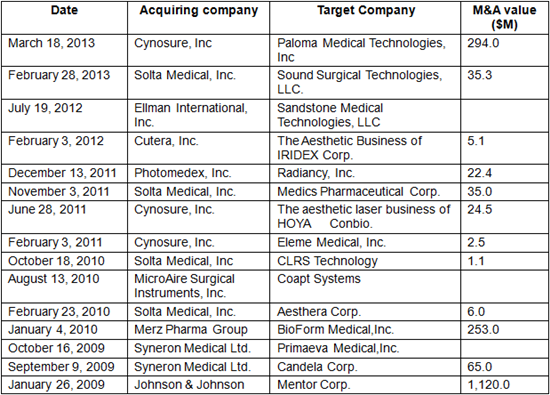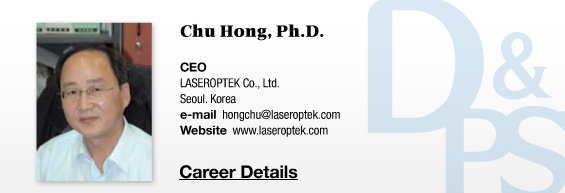In 2013, a picosecond (10-12s) alexandrite laser was introduced for tattoo removal and was soon followed by a picosecond Nd:YAG laser in 2014. However, no innovative products have since entered the market, leading to a significant drop in the number of visitors to academic conferences or medical device fairs. The 23rd World Congress of Dermatology (WCD) held in Vancouver, Canada this year also saw very few visitors. For this reason, major manufacturers of medical lasers aggressively sought out merger and acquisition in the 2010s (Table 1).
There are a finite number of laser types currently available and knowledge on the interaction between laser and human skin has been relatively well established. I think now is the time to start developing new products for both treatment and aesthetic use based on extensive research. As the treatment of pigmented lesions and tattoo removal evolved from Q-switched ruby laser to picosecond laser, lasers indicated for vascular lesions or other aesthetic treatments should improve upon previous devices, rather than being developed as an entirely new device. The purpose of aesthetic dermatology is to achieve satisfactory improvement and that of cosmetic surgery is to create an attractive appearance.

Table 1. M&As between laser manufacturers in the 2000s.
Strictly speaking, the pimcosecond laser introduced in 2013 is a sub-nanosecond laser. The pulse duration of picosecond lasers released so far is 0.4-0.7ns. Cynosure’s PicoSure released in the early days is an alexandrite laser with the initial pulse duration of 750ps (10-12 s).
<Advertisement> HELIOSⅡ/LOTUSⅡ/HYPERION – Manufacturer: LASEROPTEK(www.laseroptek.com)
-To be continued





















